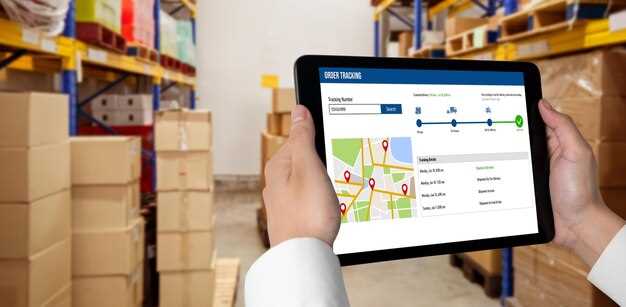Implement a centralized transport visibility platform for knowing every shipment in real time, creating a user-friendly dashboard that supports operators, drivers, and planners across road and intermodal segments.
Before rollout, map data sources–carrier APIs, telematics from trucks, and warehouse scans–many of which are used across networks–and define KPIs for delivery performance, dwell times, and exception rates, so you can track progress without silos.
A real-time view simplifies workflows by aligning dispatch, support teams, and customer service; teams can act on anomalies within minutes, not hours, reducing much alert fatigue.
Where available, fareye dashboards and fareyes modules provide route-level insights, enhancing ETA accuracy, and exception analytics you can compare across fleets and lanes.
Regularly analysed data streams rely on clean, timely feeds to drive continuous improvement; with automated alerts, you can shrink repair times and maintain service levels across the supply chain.
Invest in data quality: standardize time stamps, validate carrier feeds, and run load tests to prove ROI within 90 days; a system that supports proactive planning before disruptions keeps road operations and delivery teams in sync.
Data Requirements and Quality Checks for End-to-End Tracking

Define core data sets and the collection standards, and validate them before they enter live tracking. Assign a data-quality owner in the transport team to oversee ingestion and validate schema consistency. This role triggers corrective actions when checks fail and keeps the data flow aligned with business rules. This role facilitates escalation when issues arise.
Map all data sources and integrating points: WMS, TMS, carrier feeds, vendor portals, and IoT devices, then document field-alignment rules. Ensure each feed provides at least shipment_id, timestamp, location, status, and etas, plus optional fields such as equipment, temperature, and event codes.
Apply quality gates covering completeness, accuracy, timeliness, and consistency. Implement automated checks at ingestion and during live updates; flag missing or mismatched values and route them for corrective action before they reach downstream systems. Compare collected fields with existing records to detect drift.
Establish governance and lineage: capture metadata, track data origin, and retain an audit trail; link records to inventory units so you can measure inventory accuracy against shipments. This metadata is vital for traceability. Tie checks to the overall performance dashboard to reflect data health.
Leverage algorithms for analyzing patterns to predict etas; high-quality inputs reduce variance and offers clear impact on operations.
Plan an overhaul cadence: schedule a data-pipeline overhaul at least annually, with quarterly reviews from the team to bring improvements into the journey and strengthen accuracy. This cadence addresses the need to reduce drift and maintain steady live visibility.
Aligning ETAs, Milestones, and Exceptions Across Carriers
Implement a unified ETAs and milestones framework across all carriers using a centralized live feed and a common status model to reduce variance and improve reliability for your shipments. This approach provides a single source of truth, helping your team see performance at a glance and delivering intuitive visibility to your customers, optimizing workflows, and giving teams a clear, actionable view of every move.
Standardize milestones (pickup, hub handoff, in transit, out for delivery, delivered) with defined time buffers per route and service level. Map every carrier event to the same etas field so you can compare performance across external partners, identify significant deltas, and optimize planning. The functionality supports proactive alerts and status updates while shipments move, keeping customers satisfied and reducing calls to support, while identifying trends across carriers.
To implement, define a unified data model, align time zones, and validate feeds against historical shipments. Build live dashboards that show etas accuracy by carrier, route, and package type, and configure alerts for deviations beyond threshold. This approach supports maintaining smooth operations and gives shippers clear, contextual updates through their preferred channel, while ensuring your team can act quickly on exceptions as they arise.
Practical steps for rollout
Catalog each carrier’s service levels and map them to your standard statuses. Create a shared glossary of milestones, attach required time buffers, and codify escalation rules so a late alarm triggers the right action without delay. Validate with real data, monitor the performance of etas in real time, and iteratively tune thresholds to reduce false positives. By adopting a unified, intuitive workflow, you improve industry-wide visibility and optimize performance while delivering reliable on-time status for every package.
Tech Stack for Real-Time Visibility: Telemetry, IoT, and Carrier Feeds
Adopt a unified telemetry layer that ingests real-time data from IoT devices, carrier feeds, and business systems, then feed streaming platforms to power tracking across the shipment lifecycle from origin to status.
Telemetry and IoT Backbone
- Connect devices from origin and across the network using MQTT, AMQP, or HTTPS, ensuring payloads are compact to lower fees and enable easy, scalable ingestion.
- Define a consistent data model for shipment, origin, statuses, and events so teams within industries can align data across chains and carriers.
- Capture telemetry such as location, temperature, and door events, and attach shipment identifiers to enable tracking across the full process.
- Perform edge filtering and local aggregation to improve current data quality and reduce noise before it reaches the platform.
- Store a time-series view in a solution that supports fast lookups for customers and forwarders, enabling notify workflows when critical thresholds breach.
Carrier Feeds, Interfaces, and Platform Integration
- Ingest carrier feeds and provider APIs to surface statuses, ETAs, and event timestamps in near real-time, improving the accuracy of the tracking view.
- Offer a clean interface for partners to connect, with REST, gRPC, and streaming endpoints that support easily onboarding new providers.
- Align data contracts with business rules so the platform can automatically notify customers and internal teams when statuses update.
- Normalize data across carriers to create a consistent current state for each shipment as it moves through the network.
- Measure latency, data completeness, and error rates to monitor performance and drive continuous improvement across teams.
- Define the data contracts that cover shipment, origin, and destination fields.
- Choose a streaming backbone (Kafka, Kinesis, or Pulsar) and establish a retention policy.
- Implement validation and deduplication to avoid duplicate statuses from multiple providers.
- Set alerting and notification rules to inform customers when milestones occur or when delays arise.
APIs, Integrations, and Data Standardization for TMS, WMS, and ERP
Recommendation: Launch an API-first backbone to connect TMS, WMS, and ERP under a single data model. They are using consistent field names and validation rules across the tool interfaces, keeping data aligned throughout the stack. This gives teams a clear baseline for requirements and a chance to deliver enhanced experiences for consignees and customers.
Data standardization approach: Build a canonical model that maps TMS, WMS, and ERP fields to a common set: id, status, location, timestamp, and item attributes. They create a collected set of mappings and validate data through a central catalog. The fareyes tag helps surface special rules for consignees and carriers. This approach makes data flows more predictable, supports teams in assessing requirements across systems throughout the lifecycle.
APIs and integrations: Expose a lean API layer with versioning, consistent authentication, and robust error handling. They publish REST endpoints and use queues or streams for real-time updates, aligning ERP, WMS, and TMS actions. With clear field mappings, they ensure data collected by one system triggers compatible work within others, giving consignees and customers refreshed visibility on parcel status and schedule changes.
Governance and tools: Establish a data catalog, cross-team SLAs, and a shared tool for schema updates. They should maintain traceability and a change log to prevent drift. Against drift in data across systems, the catalog supports consistency and accountability. Among the requirements, enforce data quality checks and ensure collected data stays aligned across stakeholders. This enhances customers’ experience and stands up to audits and partner programs.
Vendor Evaluation: Criteria and Shortlist for Visibility Platforms
Start with a 5-point rubric that weighs data quality, security및 integration readiness to quickly filter candidates for the procurement shortlist.
Key criteria fall into four buckets: data integrity and timeliness; coverage and route/location granularity; platform capabilities; and operator fit. Data integrity measures include completeness, accuracy, and latency, while coverage requires extensive feeds across the world, telematics from carriers, and weather data to support route decisions. Because procurement teams need objective signals, include a tive scoring factor in the vendor comparison rubric to quantify quality and risk.
보안 and compliance form a non-negotiable layer. Look for encrypted data in transit and at rest, strict access controls, audit trails, and SOC 2 or equivalent certifications. The vendor should supply a security playbook that explains how data is partitioned and how incidents are handled.
Operational fit hinges on training and onboarding. Favor vendors that provide hands-on training for users, clear runbooks, and low-friction integration with traditional ERP and TMS workflows. A good tool offers intuitive dashboards and role-based views that enable procurement and logistics staff to receive alerts, analyzing exceptions, and act without switching systems.
Adopt a step-by-step evaluation: request demonstrations, run a pilot with real routes, and compare against a baseline using a standardized set of metrics. Analyze how the platform handles route optimization, location updates, and security incident responses. This step reduces risk before a formal purchase. Include analyzing outcomes to adjust the scoring for next rounds.
For the shortlist, require a data sample, API access, and a security and privacy checklist. Score each candidate on data quality, latency, API richness, and support and training commitments. Ensure the platform can receive data from multiple carriers and deliver a unified view for all users across locations.
In final decisions, map business outcomes to procurement goals: reduce risk, improve visibility velocity, and tighten cost control. A strong platform provides algorithms that translate raw telematics 그리고 location data into actionable insights, ensuring proactive risk mitigation across weather, route, and operational events.

 Real-Time Transport Visibility – The Ultimate Guide to End-to-End Shipment Tracking">
Real-Time Transport Visibility – The Ultimate Guide to End-to-End Shipment Tracking">
